An easy, gluten free vegan French bread recipe using the water from chickpea cans (aquafaba) as egg replacers. Crusty on the outside and soft in the middle!
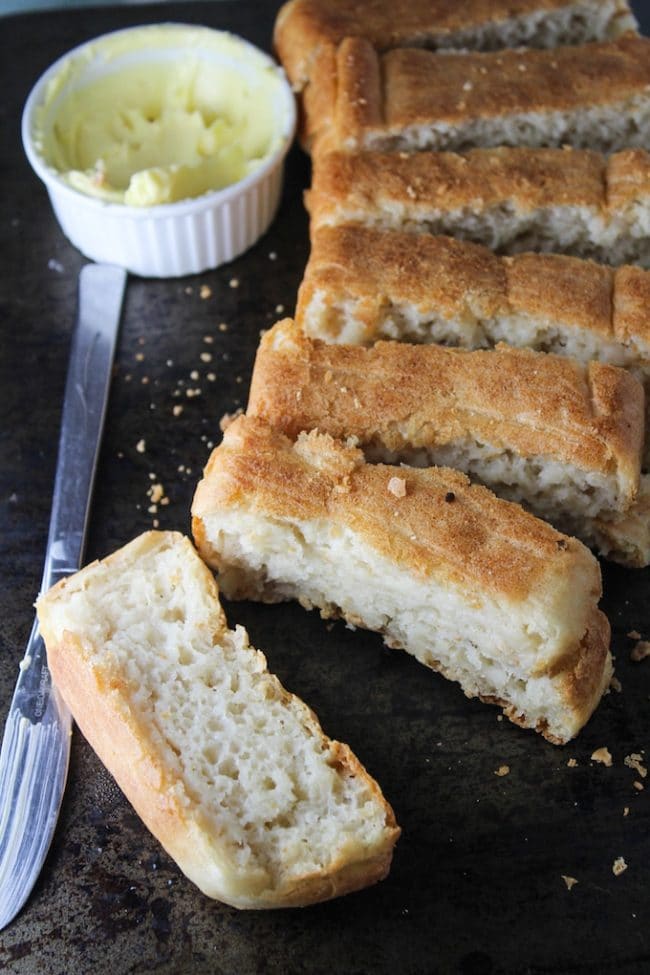
I’m pretty excited about this post today because it’s been a long time coming!
Easily my most popular recipe that I’ve ever shared on A Saucy Kitchen has been for my gluten free French bread recipe. It’s easy, it doesn’t require 50 different types of obscure gluten free flours, and above all it’s just really good!
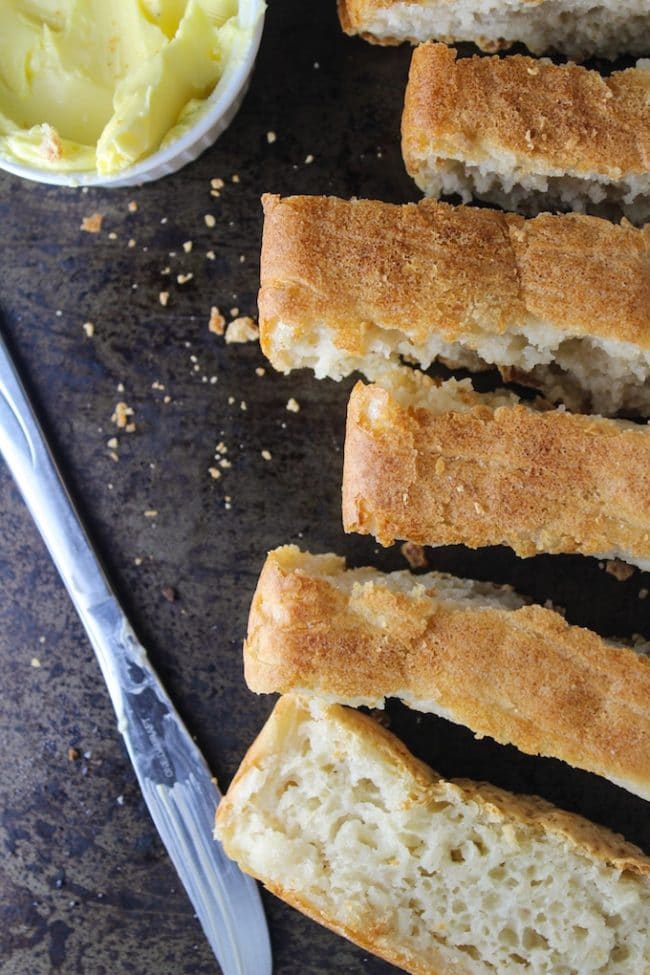
What is Aquafaba?
Aquafaba literally means bean water – as in the water that you and I used to pour down the sink when draining a can of chickpeas. As it turns out, this weird bean liquid makes for a fantastic vegan egg substitute.
As a rule of thumb 3 tablespoons of aquafaba is equal to 1 whole egg. However, this can depend on what you’re cooking and the consistency of the water. Ideally you want the water to be thick and a bit slimy – basically like real egg whites. Since the original recipe calls for egg white specifically this is perfect for our recipe!
Gluten Free Vegan French Bread
Just like the original Gluten Free Bread recipe the dough will look pretty wet and unusual compared to regular gluten filled doughs. You will have to spoon the dough into your bread pans so don’t be alarmed that you did something wrong.
Make sure that your yeast is still good before adding it to the dough. If the sugar-water and yeast mixture doesn’t foam that means that either your water wasn’t warm enough or the yeast is off. Best practice for storing yeast is to keep it in a cool, dark place like the fridge.
This bread is best on the first day, but you can keep it 2-3 days covered.
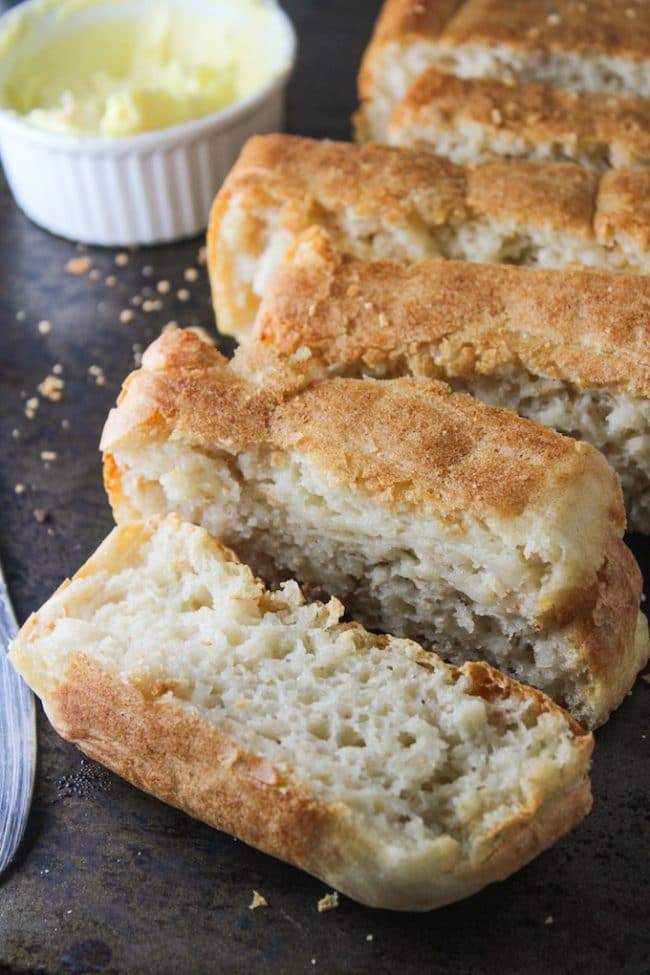
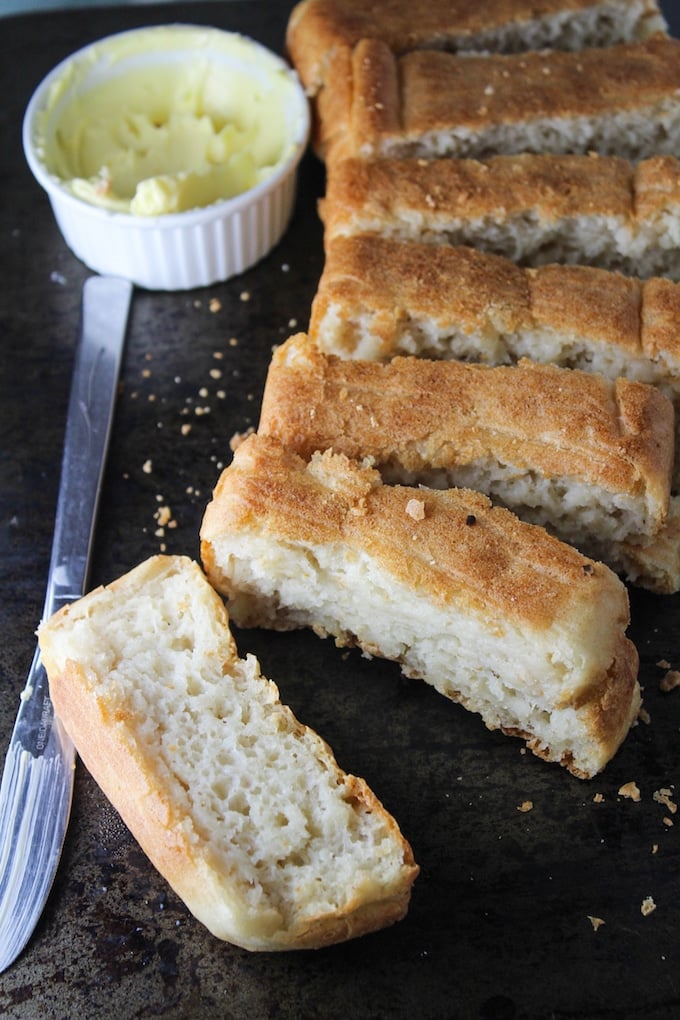
Gluten Free Vegan French Bread
An easy, gluten free vegan French bread recipe using the water from chickpea cans as egg replacers. Crusty on the outside and soft in the middle!
Ingredients
- 2 cups | 320 grams rice flour*
- 1 cup | 110 grams tapioca flour
- 2 tsp xanthan gum
- 1 teaspoon salt
- 11/2 cup |360 ml lukewarm water between 105-110 degrees F
- 2 tablespoons quick rise yeast
- 2 tablespoons sugar or any kind
- 2 tablespoons | 30 ml olive oil
- 5 tablespoons | 75 ml aquafaba
- 1 teaspoon | 5 ml apple cider vinegar (you can substitute for another vinegar if you don't have ACV
Instructions
- In a large bowl, stir together your flours, xanthan gum and salt.
- In a small bowl mix your hot water and sugar together and stir until the sugar dissolves. Make sure that your water is warm enough for this step so that your yeast proofs and the bread rises. Once the sugar dissolves, gently stir in your yeast. Set aside and let the yeast foam up for a few minutes.
- In another small bowl add the aquafaba, oil, and vinegar and whisk until you get a slight foam.
- Pour the yeast mixture into the flour mixture and mix with an electric mixer. Once the two mixtures are fully incorporated, add the aquafaba mixture and continue mixing for another couple of minutes.
- Grease or line two loaf tins or one french bread pan and spoon your batter into each tin.
- Cover and stash in a warm place for at least 30 minutes. Since our kitchen is usually freezing, I like to stow my dough in the microwave for the rising process which keeps the dough free from drafts.
- After your dough has risen (about 30 minutes) preheat your oven to 400F/ 200C. Bake for 40 minutes. Rotate the bread after about 20 minutes in the oven to ensure the bread cooks and colors evenly.
- Remove from the pan and cool on a wire rack and then enjoy!
Notes
This is best enjoyed fresh - as is the case with most homemade gluten free breads this can become chewy over time
Nutrition Information
Serving Size:
slice Calories: 124Sodium: 168mgCarbohydrates: 24gFiber: 1gSugar: 1gProtein: 1gHave you made anything else with aquafaba? I’d love to know your own experience working with it!


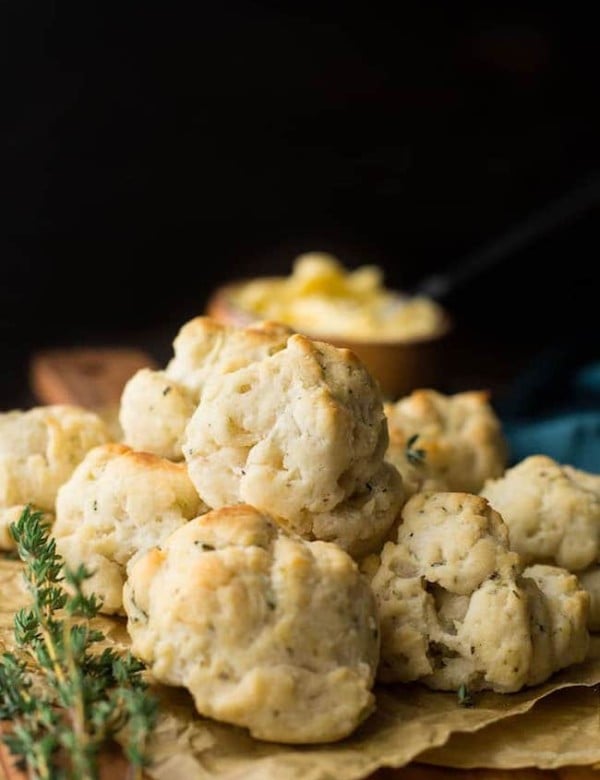
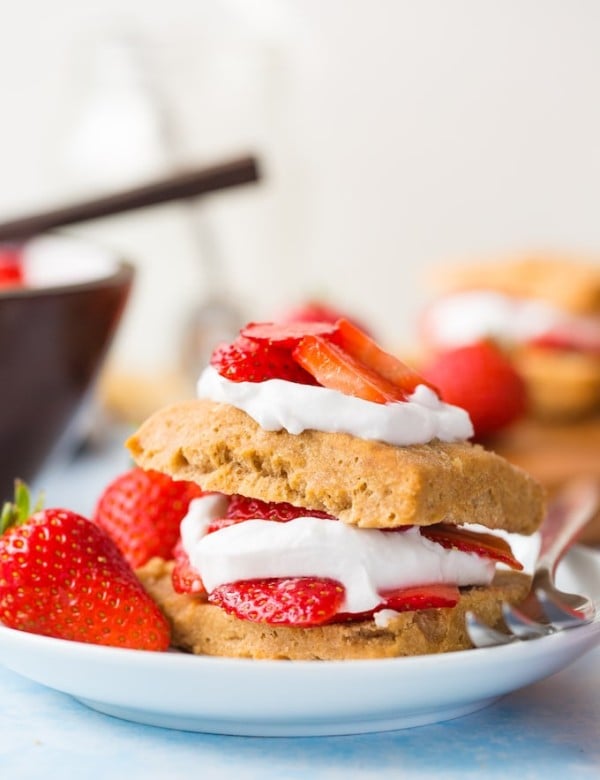
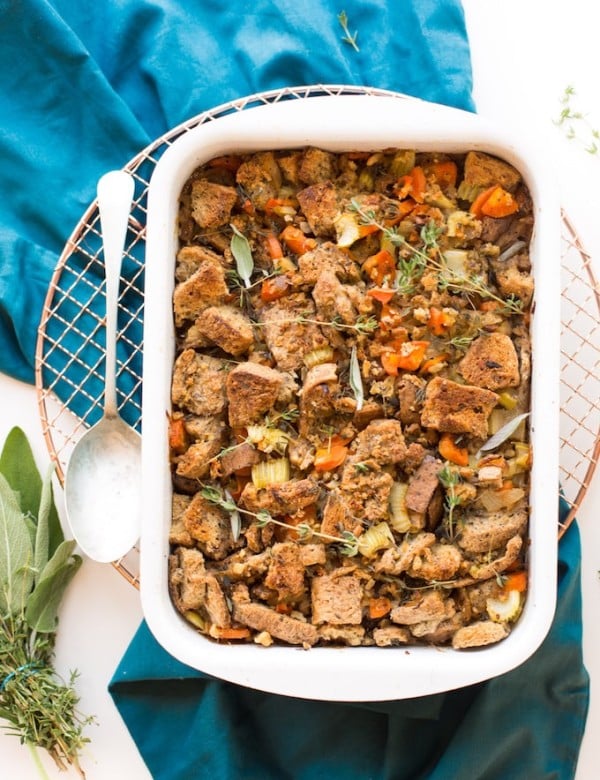
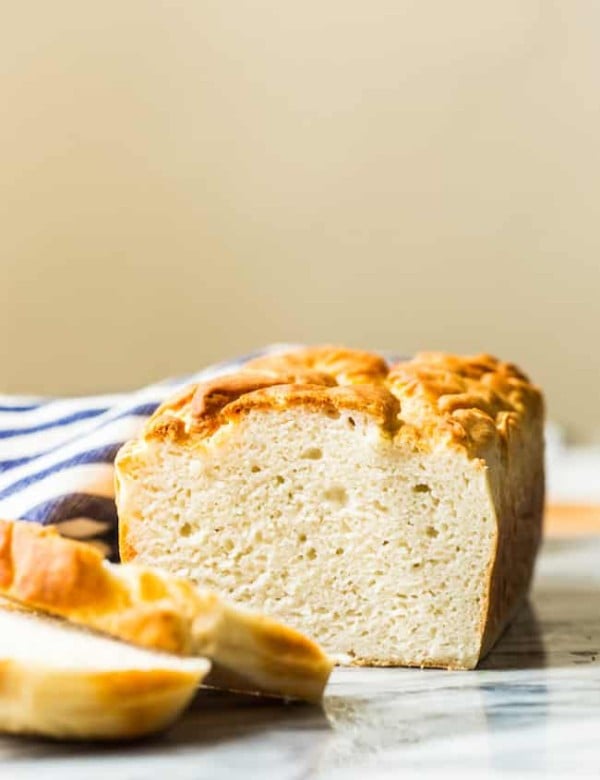
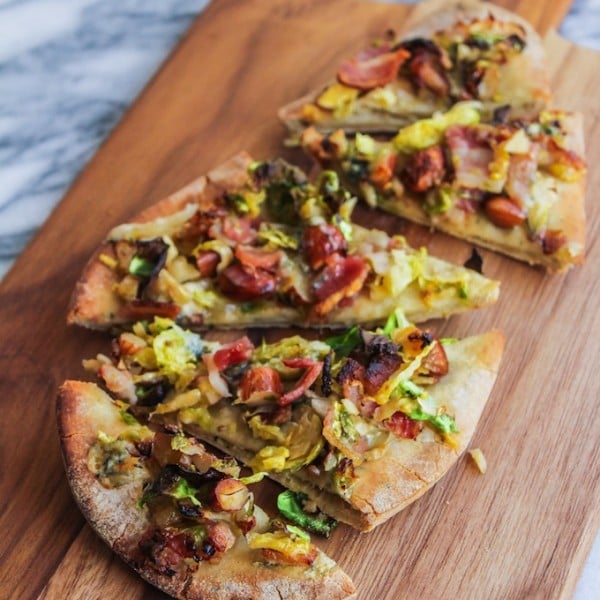
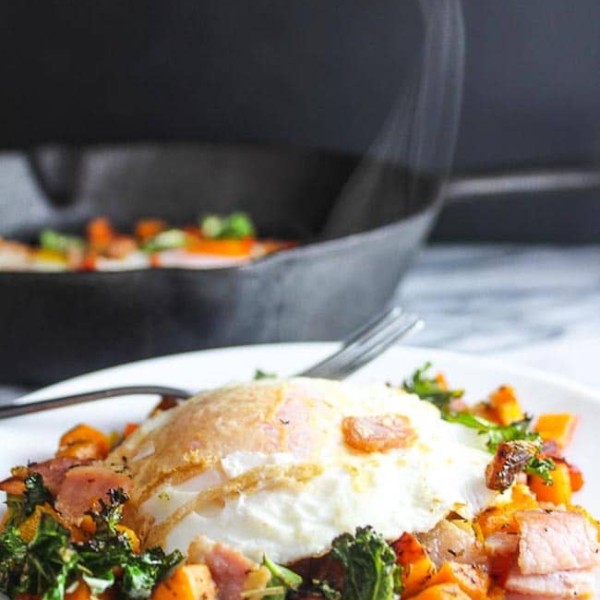
Jason says
Amazing bread! Quick question: Not sure if this should be clear to me, but when you say “turn” the dough halfway through baking, do you mean flip or rotate horizontally?
Sarah Nevins says
Hi Jason! Sorry – I should have been more clear there! I meant to say that you might want to rotate the bread to ensure the front and back of the bread cook and color evenly in the oven. I’ll go clarify that in the recipe now!
So glad to hear you enjoyed the bread!
Heather says
hello, what type of rice flour is meant to be used here? thanks!
Sarah Nevins says
Hi Heather! You can use standard white or brown rice flour (not sweet rice flour or sticky rice flour).
Brian Gosling says
Thank you Sarah as I’ve just successfully cooked this loaf after two failed attempts with other recipes. It’s wonderful. I’d just like to ask you if you feel this could also be done using a plain flour and buckwheat flour split?
Sarah Nevins says
Hi Brian! So glad you were able to enjoy this! Unfortunately, I’m not too sure about how it would work with that flour combo, but now I really want to try it with buckwheat flour now though!
Sorry I couldn’t be more help here – I just don’t want to give you bad advice!
Rainbow says
Hi, I have questions! 🙂
The GF flour I have has xanthan gum in it and is a blend of brown rice, sweet rice, rice and also has tapioca starch in it. Will this work or does it need to be solely rice flour with no additives? Also, do I still add xanthan gum if my flour has it included already? I really don’t want to mess up my bread and can’t wait to try this recipe! Thank you it looks amazing!!!
Sarah Nevins says
Hi Rainbow – it’s hard to say for sure without trying it out myself, but based on those ingredients I think it should work here pretty well! As for the xanthan I recommend leaving it out to begin with. If after you’ve added all of your ingredients together and your dough still looks too much like batter without any shape to it then go ahead and mix in the xanthan. Hope that helps!
Ellie says
Which brand do u have? Was it Bob’s red Mill? And did ur bread work out. I realized your flour mix already had xanthan gum in it. 🙂
(Sarah missed that part)
Millie says
Hello!! Reading the recipe I see 1 1/2 cups of water, is that right? It seems like a lot of water. Is it 1 1/2 cups or 1/2 cup??
Sarah says
Hi Millie! It is 1 1/2 cups!
Carol says
I just made your gluten free flour mix – can I use that in this recipe? What modifications would I need to make for this? Thanks! 🙂
Sarah says
Hi Carol! While I haven’t tried this recipe exactly using a flour blend I do think that it would work. The rice/tapioca flour kind of act like a really basic flour blend.
I actually also have a gf/vegan focaccia that’s very similar to this recipe that uses a flour blend if you wanted to check that out too https://www.asaucykitchen.com/gluten-free-focaccia/ You could always make the focaccia base without all the toppings and it will be pretty similar to this.
Hope that helps!